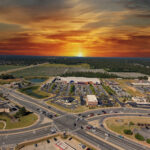They’re deceptively simple looking detectors: one an antenna with built-in GPS; the other electronic sensors inside what looks like — and in fact, is — a large, upside-down metal salad bowl.
The sensors are the basis of a Los Alamos National Laboratory project studying lightning inside a hurricane in hopes of improving the accuracy and timeliness of forecasts for people in a storm’s path.
The effort is in the second of three years of research. The team is gearing up for the Atlantic hurricane season that peaks in August and September.
The Los Alamos team says hurricane watchers use satellite images and computer simulations to forecast a storm’s trajectory, but that it’s a challenge to predict how a hurricane will strengthen or weaken as it approaches land.
Was this article valuable?
Here are more articles you may enjoy.


 California Again Delays Wildfire Protection Rules for Homes
California Again Delays Wildfire Protection Rules for Homes  Chubb, The Hartford, Liberty and Travelers Team Up on Surety Tech Launch
Chubb, The Hartford, Liberty and Travelers Team Up on Surety Tech Launch  After Years of Pushing Rate Hikes, Florida’s Citizens Now Wants HO Rate Decrease
After Years of Pushing Rate Hikes, Florida’s Citizens Now Wants HO Rate Decrease  Man Sentenced for Flashing Three Insurance Agencies in Georgia
Man Sentenced for Flashing Three Insurance Agencies in Georgia 

